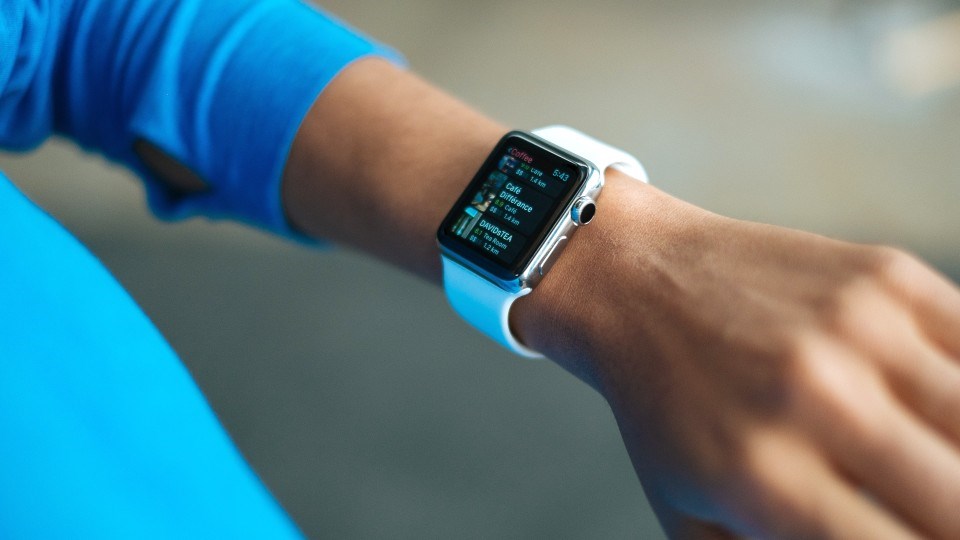In theory, it’s the perfect system.
A device that attaches to your wrist, reminding you to move more, to add activity to your day. Sitting is the new smoking, they say, so we need to combat this sedentary lifestyle by adding a tiny computer to our day, and simply listening to what it tells us.
How much easier could the road to health be? A path to weight loss, to a strong heart, and to the overall feeling of being a person in charge of their future.
But does it work?
The answer to this question is the same answer you’ll receive to most health questions: sometimes, for some people, depending.
Denise Duhaime of Sudbury said that she and her husband are devoted users of their devices’ step counter and exercise monitor.
“We seldom go to bed at night without having our 10,000 steps,” she said, and notes her husband uses a stair tracker as well. “If we’re missing steps, we grab our coats and go for a walk around the block.”
The couple has lost weight, but Duhaime notes that it was not totally related to their devices. “Fitbit alone did not decrease our weight, but it did motivate us to want to lose weight and keep active.”
But now another question. The reference to 10,000 steps as being the optimum amount of activity for a human is very familiar. But is it true?
What if you were to learn that this number came from a Japanese marketing campaign that capitalised on the excitement of the 1964 Tokyo Olympics, a company called Yamasa designed the first wearable step-counter, the name of which translates as ‘10,000-step meter’?
Research has been done since, trying to determine if this number matters, but while the studies have not disproven that 10,000 steps is better than, say, 5,000, they also have not thoroughly checked any other numbers.
There is emerging evidence that between 7,000 and 8,000 could be better, and that there needs to be a maximum as well. There are also no specifications on the intensity of this exercise – is taking 5,000 steps at rapid pace better than 10,000 at a slow pace? As well, there are concerns about any health advice attributed universally, as some may find that changing their activity level rapidly may hurt more than help.
And for those looking to the devices to motivate them to become more active, they may not find what they need. There are competitive aspects to the devices as well, allowing you to compete with friends and other users of the device.
The question is does competition hinder rather than help?
Founder and president of Akfit, Karen Hastie, has helped customers with many fitness device purchases, and, in her opinion, the devices are not really for those looking to jumpstart a change in their lifestyle.
“The wearable fitness trackers have, in my mind, been purchased by those who want to see what they have achieved and those hoping the device will motivate them to become more active. I believe those who are hoping these devices will motivate often do not accomplish what they want,” she said. “I feel speaking with a fitness expert and identifying what it is you want to achieve is the most important first step, followed by how to get there. The monitoring, in my opinion, follows.”
Essentially, figure out your goals, and your favourite activities, then find the way to track your success.
This has worked for Sarah Elsasser of Sudbury.
“I initially bought it because I decided to hit off one of my bucket list items, a marathon,” she said.
At the time, she was living in an area that required her to do many small laps around her city of Yellowknife, and she wanted to keep track of her training.
“I definitely still find it motivating,” she said. “I know what I have been able to do with it — speed, distance — so when I see that I am not meeting those goalposts, I find I push myself more: One more kilometre … you can do it!”
So, for those looking to track their already active lifestyle – to ensure they are reaching important milestones – the devices can be very handy. For others, the motivation can fall as quickly as your step count.
If you do decide you would like to invest in a fitness device of some sort, Hastie has recommendations to ensure you get what you’re looking for. First, she said, focus on getting yourself on the best fitness track for you, before getting the fitness tracker.
“Personally I would not base my fitness program and success solely on a fitness tracker. They can be a good supplement, when used properly, to monitor what is important to you.”
Additionally, “Do your research (and) know what you want from the device. Make sure you have something to track. And speak to a specialist to help you select” the one that would work best for you.
While fitness trackers can be a benefit to an active lifestyle, they are not going to magically transform you into the best health of your life. That will take finding the activity that works for you first, then seeing if you need to track it. And as for 10,000 steps: again, if it works for you, great; if not, then your device can maybe take 10,000 steps off a short pier.
